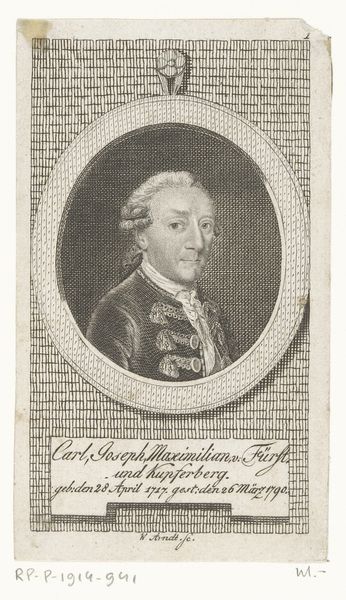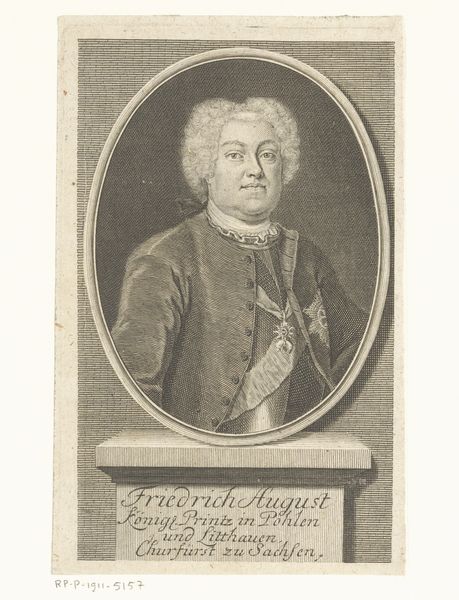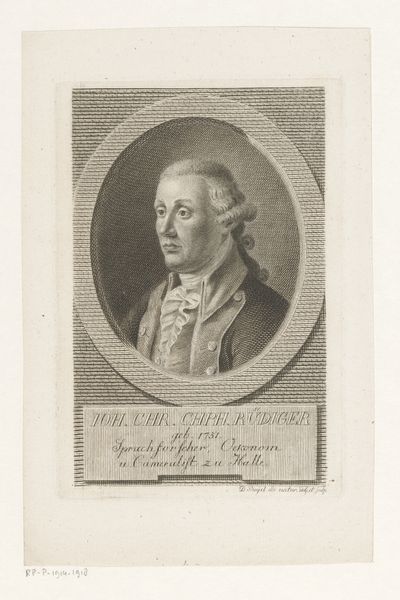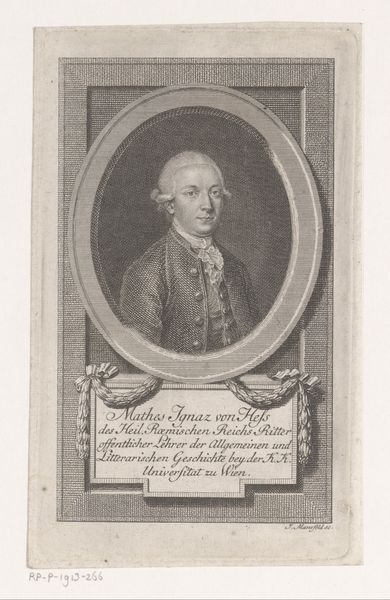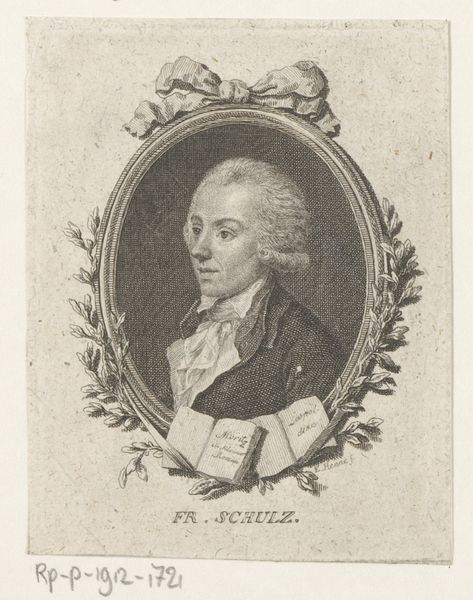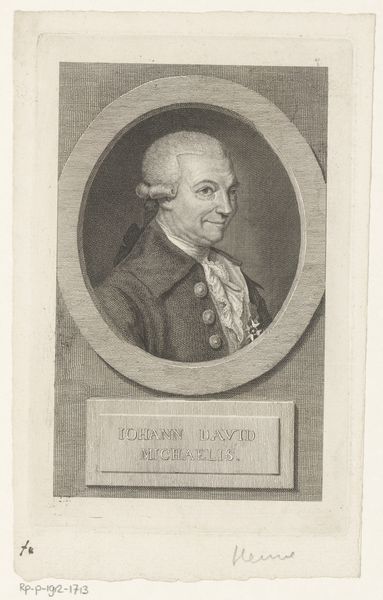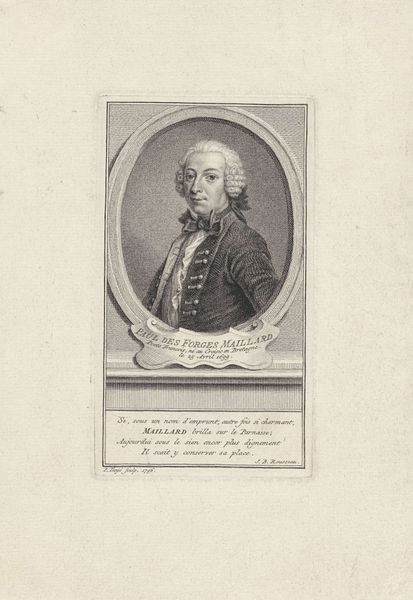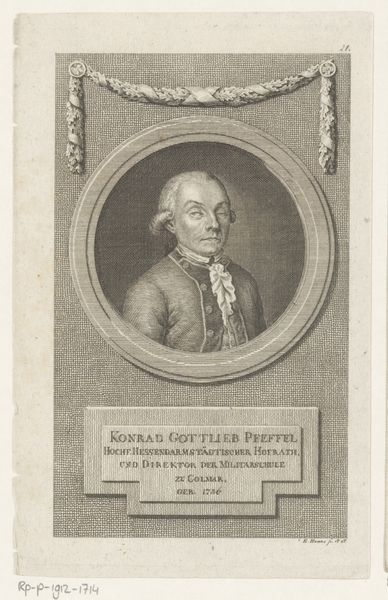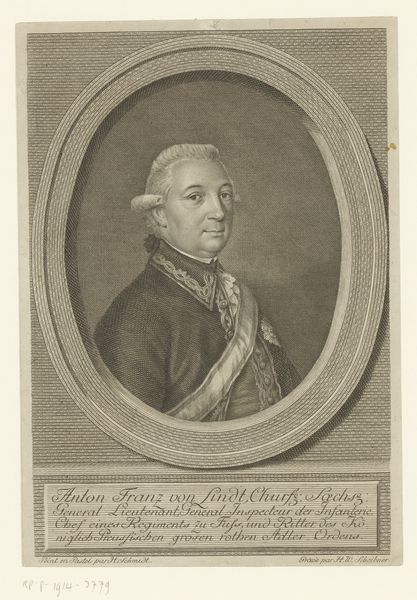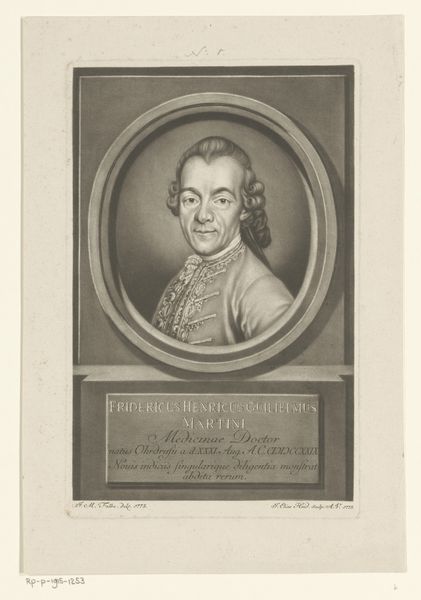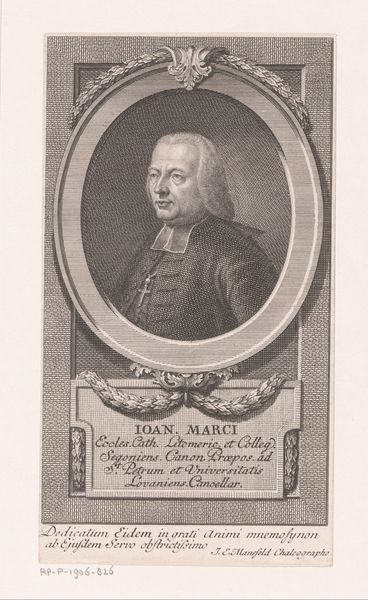
Dimensions: height 177 mm, width 114 mm
Copyright: Rijks Museum: Open Domain
Eberhard Siegfried Henne created this portrait of Johann Christian Friedrich Scherf, likely in the late 18th or early 19th century, using etching. The fine lines and tonal gradations you see are achieved by repeatedly drawing through a wax-covered metal plate, which is then exposed to acid. The longer the acid bites, the deeper the line, and the more ink it holds, resulting in darker tones when printed. The artist's skill lies in controlling this process to create a convincing likeness, capturing not just Scherf's features but also the texture of his clothing. The printmaking process itself speaks to the changing social context of the time. Etchings like this allowed for the relatively inexpensive reproduction of images, making portraits accessible to a wider audience beyond the wealthy elite. The labor-intensive nature of etching contrasts with the increasing mechanization of other industries during this period. By appreciating the materials and making involved, we gain a richer understanding of the artwork’s cultural and social significance.
Comments
No comments
Be the first to comment and join the conversation on the ultimate creative platform.
